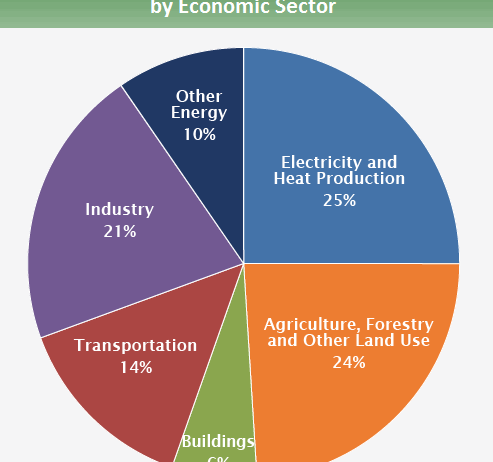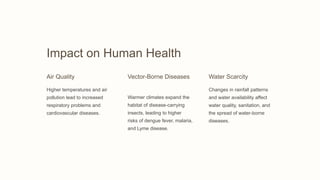As our planet grapples with unprecedented shifts in climate, the role of greenhouse gases (GHGs) emerges as a crucial area of concern. These invisible culprits are paramount in orchestrating the warming of our atmosphere. To comprehend the gravity of the situation, one must delve into the intricacies of greenhouse gases, their origins, properties, and the impact they have on global warming.
Greenhouse gases are primarily composed of carbon dioxide (CO2), methane (CH4), nitrous oxide (N2O), and fluorinated gases. Each of these gases varies not only in their source and abundance but also in their warming potential and lifespan in the atmosphere.
1. Carbon Dioxide (CO2)
Carbon dioxide, the most pervasive greenhouse gas, accounts for the majority of emissions resultant from human activities. The primary sources are fossil fuel combustion for energy, deforestation, and certain industrial processes. CO2 exhibits a long atmospheric lifetime—up to thousands of years—which allows it to accumulate significantly over time. Its relative stability and ability to absorb infrared radiation make it an effective insulator for heat, contributing substantially to the greenhouse effect. This phenomenon enhances the Earth’s temperature, exacerbating climate extremes.
Moreover, the carbon footprint from various sectors—such as transportation, electricity generation, and agriculture—underscores the urgency for mitigation. Transitioning to renewable energy sources and enhancing energy efficiency represents a dual approach to curtail CO2 emissions and combat climate change.
2. Methane (CH4)
Methane, while present in smaller volumes compared to CO2, is significantly more potent as a greenhouse gas, with a global warming potential approximately 25 times greater over a 100-year period. Methane is released through natural processes and human activities, including the extraction and burning of fossil fuels, landfills, and agricultural practices, especially livestock digestion (enteric fermentation). The atmospheric lifespan of methane is shorter than that of CO2, lasting about a decade. Thus, reducing methane emissions can render quick benefits in terms of mitigating climate change.
Innovative strategies, such as methane capture from landfills and the implementation of better agricultural practices, could play a critical role in abating methane emissions. Achieving these objectives requires cooperation among various stakeholders, including farmers, businesses, and policymakers.
3. Nitrous Oxide (N2O)
Nitrous oxide is another greenhouse gas with a high warming potential, estimated to be nearly 298 times that of CO2 in a century. It is primarily released from agricultural and industrial activities, particularly through the application of synthetic fertilizers and organic waste management. Moreover, N2O emissions also arise from fossil fuel combustion and certain industrial processes.
Addressing nitrous oxide emissions necessitates a multi-faceted approach. Enhanced agricultural practices, such as reduced nitrogen inputs and improved cropland management, can mitigate N2O emissions significantly. Furthermore, raising awareness among farmers and providing technical assistance are vital to achieving desirable outcomes.
4. Fluorinated Gases
Fluorinated gases, though present in trace amounts, are a group of synthetic gases with a high global warming potential, sometimes thousands of times more potent than CO2. They include hydrofluorocarbons (HFCs), perfluorocarbons (PFCs), and sulfur hexafluoride (SF6). These gases are widely utilized in industrial applications, refrigeration, and air conditioning. Their long atmospheric lifetimes render them particularly dangerous, perpetuating warming trends long after their release.
Global agreements aim to phase down the use of HFCs and promote alternatives with lower environmental impact. Collaborative international efforts, such as those under the Montreal Protocol, are essential in curbing the emissions of these potent gases.
5. The Interconnectedness of Greenhouse Gases
The interplay between various greenhouse gases is complex. Changes in one gas’s concentration can influence the behavior and efficacy of others, creating ripple effects throughout the climate system. For instance, as temperatures rise, increased decomposition of organic matter can release additional methane, further amplifying warming. Thus, a holistic approach to addressing greenhouse gases is imperative to avoid counterproductive outcomes.
6. Climate Feedback Loops
Climate feedback loops substantially complicate the scenario of greenhouse gas emissions. These feedback mechanisms—both positive and negative—intensify or mitigate climate change. For example, melting polar ice reduces the Earth’s albedo (reflectivity), causing more solar energy absorption and further warming. Conversely, increased vegetation growth in warmer conditions may sequester more carbon dioxide, working against climate change.
Thus, understanding feedback loops is essential for anticipating future climate scenarios and devising strategic interventions. Predictive models must incorporate these dynamics to gauge the potential impacts of greenhouse gas fluctuations accurately.
7. Mitigation Strategies
Mitigating the impacts of greenhouse gases requires a multifaceted and coordinated global response. Policies must focus on transitioning to renewable energy sources, enhancing energy efficiency, and promoting sustainable land-use practices. Investment in innovative technologies, such as carbon capture and storage, also offers significant promise.
Moreover, public engagement and education play pivotal roles. Raising awareness about greenhouse gases and their implications empowers individuals and communities to adopt sustainable practices. Behavioral changes, when adopted on a large scale, can lead to meaningful reductions in emissions.
Conclusion
Combatting climate change hinges on understanding and addressing greenhouse gases’ crucial roles in global warming. By recognizing the sources, characteristics, and interconnections of these gases, stakeholders can formulate effective strategies to mitigate their impact. By acting collectively and decisively, we can steer our planet toward a more sustainable future, preserving its integrity for generations to come.








